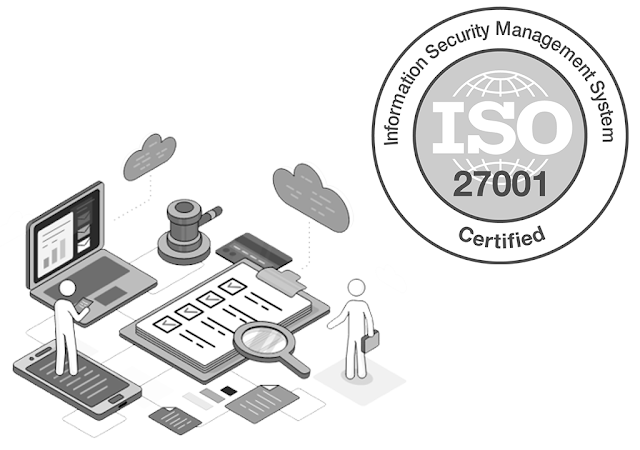In today's digital landscape, safeguarding sensitive data and ensuring information security are paramount for businesses. The ISO 27001 certification provides a solid framework to establish and maintain a robust Information Security Management System (ISMS). To demystify the intricate details of ISO 27001 control implementation, this comprehensive guide offers a deep dive into the specific controls that play a pivotal role in achieving certification. Whether you're preparing for ISO 27001 certification or seeking to enhance your organization's security posture, these detailed control descriptions will provide valuable insights and practical strategies.
1. Access Control: Securing Digital Boundaries
User Authentication:
Discover the methods used to verify user identities, including usernames, passwords, and multi-factor authentication, ensuring only authorized personnel gain access.
Access Rights:
Explore the process of assigning access privileges based on job roles to prevent unnecessary exposure of sensitive data.
User Account Management:
Learn how to establish effective processes for creating, modifying, and deactivating user accounts to mitigate unauthorized access risks.
2. Physical Security: Protecting Tangible Assets
Facility Access:
Uncover measures that control physical access to premises, from ID badges to biometric systems, ensuring only authorized individuals enter.
Equipment Protection:
Understand procedures that safeguard equipment against theft, damage, or misuse, contributing to a secure environment.
Secure Disposal:
Delve into protocols for securely disposing of sensitive information and hardware to prevent data breaches.
3. Information Security Policies: Guiding Secure Practices
Security Policy Framework:
Learn how to formulate and communicate security policies that establish the foundation for your organization's security efforts.
Compliance Monitoring:
Explore methods to ensure employees adhere to security policies and guidelines, enhancing overall information security.
4. Incident Response and Management: Rapid Action for Threats
Incident Identification:
Dive into techniques for detecting and identifying security incidents, from intrusion attempts to potential data breaches.
Incident Reporting:
Understand the process of promptly reporting incidents to the appropriate authorities within the organization.
Incident Resolution:
Gain insights into managing, containing, and resolving incidents to minimize their impact and potential damage.
5. Data Encryption and Protection: Safeguarding Information Assets
Data Classification:
Discover the categorization of data based on sensitivity and how appropriate encryption methods are applied to each category.
Data in Transit:
Explore the encryption of data during transmission over networks to thwart interception and unauthorized access.
Data at Rest:
Learn about encryption techniques used to secure data stored on servers, databases, and devices, mitigating risks of unauthorized access.
6. Security Awareness Training: Empowering Your Workforce
Employee Training Programs:
Understand the significance of ongoing training to educate employees about security risks, best practices, and their responsibilities.
Phishing Awareness:
Delve into the training strategies that enable employees to recognize and respond effectively to phishing attempts.
7. Risk Assessment and Management: Calculated Protection
Risk Identification:
Learn how to identify potential threats and vulnerabilities that could compromise your organization's information assets.
Risk Mitigation:
Explore strategies for addressing identified risks through effective controls, safeguards, and preventive measures.
8. Backup and Recovery: Ensuring Data Continuity
Data Backup Processes:
Discover the methodologies behind regular data backups, ensuring data availability in case of system failures or data loss.
Recovery Plans:
Understand how to develop robust recovery plans that restore systems and data, minimizing disruptions during crises.
9. Supplier and Third-Party Management: Extending Security Reach
Vendor Risk Assessment:
Explore the process of assessing security practices of third-party suppliers, mitigating risks associated with external partnerships.
Contractual Agreements:
Understand how to include security requirements in contracts with third parties, enhancing data protection and security.
10. Change Management: Adapting Securely
Change Approval Process:
Learn about procedures for evaluating, approving, and implementing changes to systems and applications securely.
Impact Assessment:
Explore how to assess changes for potential security risks before they are implemented, preventing vulnerabilities.
As you embark on your journey towards ISO 27001 certification or aim to strengthen your organization's information security practices, these detailed control descriptions will serve as your compass. By implementing these controls effectively, you'll not only enhance your organization's security posture but also demonstrate a commitment to safeguarding sensitive data and maintaining the integrity of your information assets.







0 Comments